We actually showed up Friday, but we were later than the last tour, and with Saturday booked up with Cosmospheric concerns, we bought tickets for a tour on Sunday.
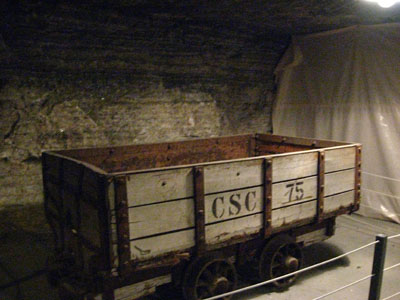
This is, so you know, a one-of-a-kind deal. I doubt you could take a tour of a coal mine, for instance, it'd be too dangerous. But salt, luckily, doesn't coexist with a bunch of poisonous and explosive gas.
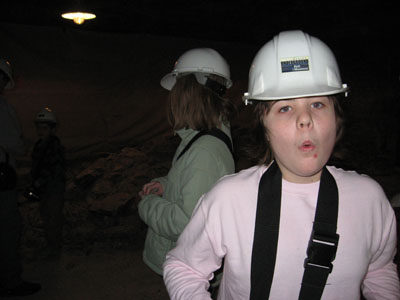
You get a helmet and a rescuer (a sort of air purification unit you use to breathe in a cave-in) you're required to wear while underground, but in fifty years of their use, nobody has had to use the rescuer. Ever. I like odds like that, especially when it'd be my honyocks in harm's way. I'm the sort of idiot who would be so fascinated he'd take the coal mine tour, knowing they just had to use those rescuers last week, but I wouldn't put the girls down a hole like that.
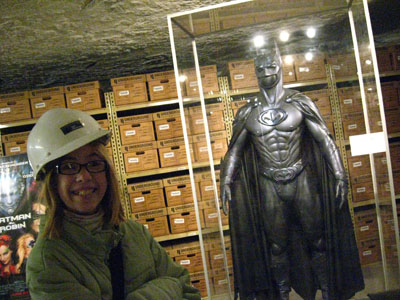
The elevator ride down, my ears are popping. The tour is 650 feet below, and the double-deck elevator takes longer to load than it does to make the distance. For a frame of reference, that's down as far as the top of the Washington Monument is up.
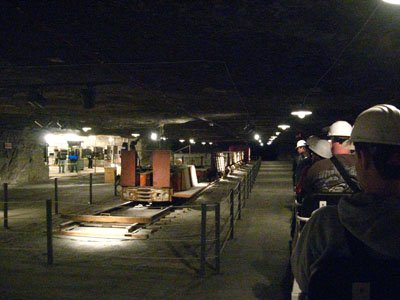
Good story (trust me or skip a couple-three paragraphs) goes with the mine: The Carey Salt Co., where we were, was one of some 26 salt companies that sprung up in Hutchinson's Salt Boom. I wondered what a salt boom could be about, since you're not supposed to eat that much of the stuff. I know public attitudes about food were different in 1887, but still, how much salt could you eat if you wanted to?
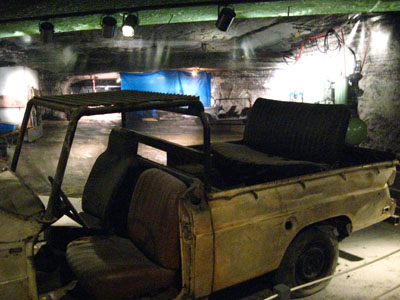
The answer, of course, is road salt, dumbass. This mine, vast as it is (and on a vein of salt that extends as far as Oklahoma City), provides the city of Chicago with road salt. Chicago buys 70% of the mine's annual output of some 275,000 tons.
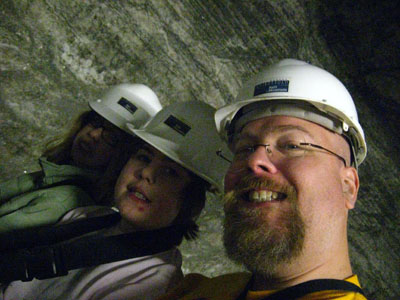
Okay, so Chi buys 70% of this mine's output, what about Minneapolis? St. Louis? Cleveland? The state of Kansas, for crying out loud?
In other words, there must be hundreds of mines like this to keep our roads navigable each winter.
But back to the good story. The dude who found the salt was a ne'erdowell who had already left out of one town on the lam. He had some land in Hutchinson and when he got in a tight spot, he dumped a bunch of barrels of crude oil in hopes of, well, salting the mine.
He couldn't find the oil he'd dumped in his efforts to con someone into buying is otherwise forgettable land, but he did hit salt.
I gather this didn't do him any good, though it did a world of good for the town, which was perfectly poised to exploit the Twentieth Century's love of the automobile and its often forgotten dependence on salt.
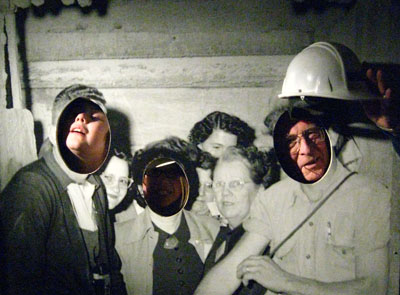
Fast forward to today, and Mo has done a great job of donning her hardhat and rescuer, gets on the tram and starts fighting the gear.
Keep in mind, the day before, I had to bail on two shows at the Cosmosphere with her because she couldn't get it together. We're 650 feet down and no illusion that it's easy to get out of here. Grandpa Calvin had been asking me if I had a plan if she needed to be extracted, and I didn't. I thought he meant in terms of if she had a seizure, and I didn't figure I needed one. I had the Atavan with me, and beyond that, I couldn't see a medical emergency that would require us to get topside faster than a salt miner might need to be.
But while fighting her to submit to keep the gear on, I realized that what he probably meant was what if she didn't chill out and play the game? It's not just a doorway you're up against, there's 650 feet of earth over you and you'll have to convince the employees of the mine you have to get up.
But, not to worry, she settled right down once the tram started moving. The tram took us through, I would guess, a mile or two of mine. It's an endless pattern of open space, 12 feet high, with 40 by 40 foot columns left unmined. There's hundreds of feet of it above us that's still salt, so I guess when they get to Oklahoma City in a few decades they can turn around and come back for the next dozen feet of the stuff.
A small world? I think not. A small me down the hole here, but the world seems plenty big.
They showed us salt cars that held 3-1/2 tons of salt, and told us how two guys would fill it in a couple hours, earning a chit worth 50¢. This was back when $2 a day was good wages, but still. Shovel-and-picking my way through six or eight tons of anything in a day, my back hurts just thinking about it.
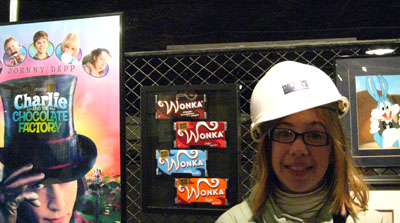
It must have taken hundreds of guys to do the mining back then. Today, only 15 employees work this mine, producing that 275,000 tons of salt. Eleven of them are mechanics, the other four work the equipment and do the blasting. That's pretty damned efficient.
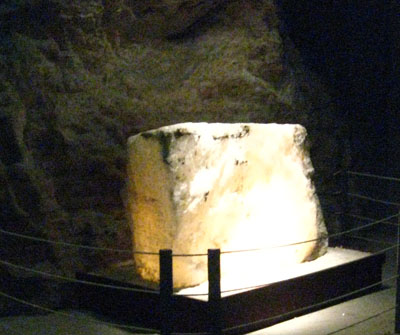
The knee-jerk blue collar reaction to efficiency is it's jobs that are lost. Hundreds of guys no longer needed to wear their bodies out humping salt.
Thing is, it might be a job lost, but is it a job a person should be asked to do?
The mined out areas, though, aren't as obsolete as those salt humpers. Record storage in the mined out areas employees 70 people. They have everything from the deed to my Mom's house to copies of my dental records to Hollywood artifacts and film.

No comments:
Post a Comment